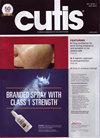嗅出皮肤疾病:皮肤疾病的气味。
IF 2.7
4区 医学
Q3 DERMATOLOGY
引用次数: 0
摘要
尽管皮肤科主要依靠视觉和触觉,临床医生经常忽略嗅觉,尽管遇到诊断气味。我们查阅了PubMed和b谷歌Scholar关于疾病相关皮肤气味的文章。细菌和真菌感染发出特有的气味,而遗传和代谢疾病(如达里尔病、三甲氨基尿、苯丙酮尿、枫糖尿病)和器官功能障碍(肾功能和肝功能衰竭)产生独特的气味。初步证据还表明,黑色素瘤可能有一种独特的气味,可以被犬类检测到。虽然客观气味测量仍然具有挑战性,但结合嗅觉可以提高诊断,值得进一步研究。本文章由计算机程序翻译,如有差异,请以英文原文为准。
Sniffing Out Skin Disease: Odors in Dermatologic Conditions.
Although dermatology relies primarily on sight and touch, clinicians often overlook smell despite encountering diagnostic odors. We reviewed PubMed and Google Scholar for articles on disease-related cutaneous odors. Bacterial and fungal infections emit characteristic malodors, while genetic and metabolic disorders (eg, Darier disease, trimethylaminuria, phenylketonuria, maple syrup urine disease) and organ dysfunction (renal and hepatic failure) produce unique scents. Preliminary evidence also suggests melanoma may have a distinct odor detectable by canines. Although objective odor measurement remains challenging, incorporating olfaction could enhance diagnosis and merits further research.
求助全文
通过发布文献求助,成功后即可免费获取论文全文。
去求助
来源期刊

Cutis
医学-皮肤病学
CiteScore
1.10
自引率
0.00%
发文量
191
审稿时长
6-12 weeks
期刊介绍:
Published since 1965, Cutis is a peer-reviewed clinical journal for the dermatologist, allergist, and general practitioner. The journal is published monthly and focuses on concise clinical articles that present the practical side of dermatology. Referenced in Index Medicus/MEDLINE, it is respected and enjoyed by both specialists and derm-active generalists, enabling its readers to get what they need quickly and efficiently. Furthermore, Cutis is read by more physicians actively involved in the day-to-day treatment of dermatologic conditions than any other dermatology publication. Covering a broad range of pertinent and timely topics, Cutis is written and edited by industry leaders. For information on article submissions, please see our Information for Authors.
 求助内容:
求助内容: 应助结果提醒方式:
应助结果提醒方式:


